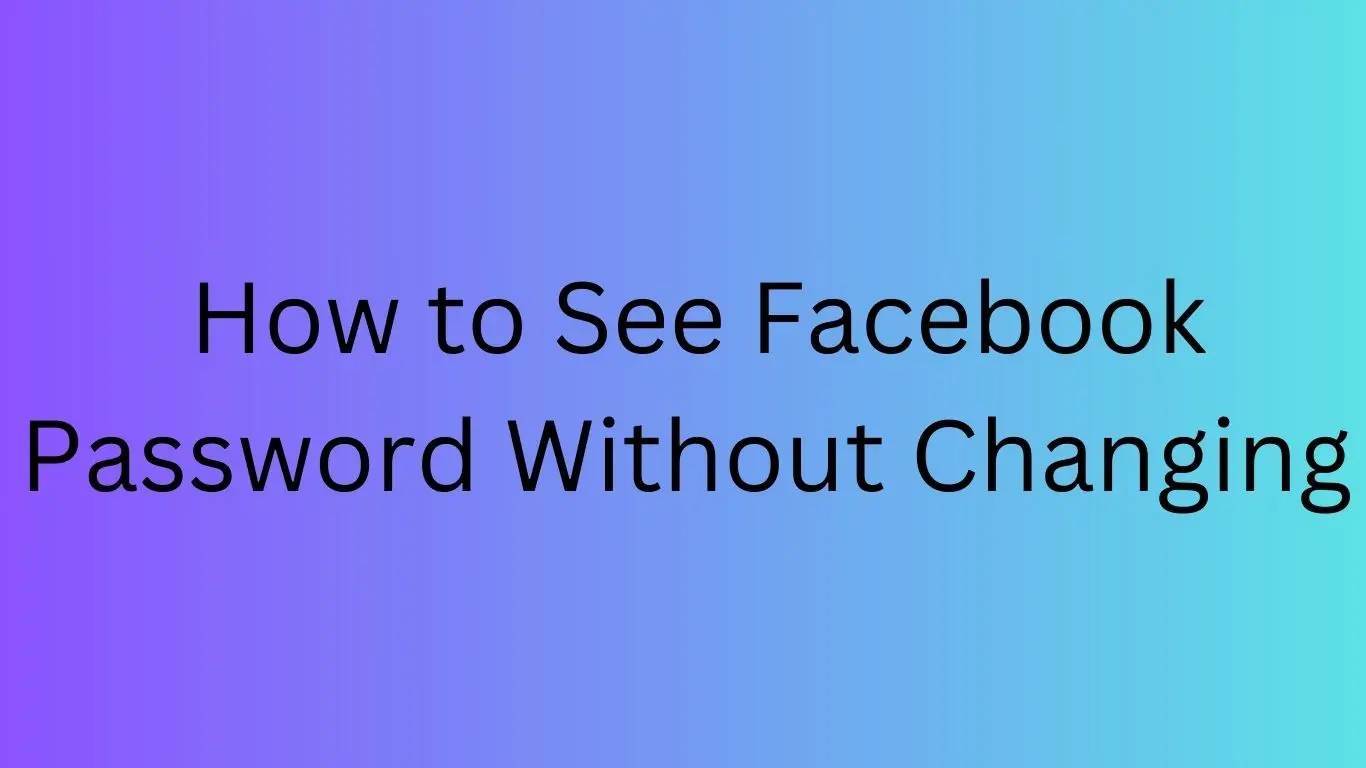Unlocking the Secrets: How to View a Facebook Password Without Altering It (See My Facebook Password)
In the digital age, where information is key and passwords are the guardians of our online lives, there might come a time when you need to access a Facebook account but don’t want to change the password. Whether it’s for account recovery or legitimate reasons, understanding how to view a Facebook password without altering it can be a valuable skill. In this guide, we’ll explore methods and precautions you can take to achieve this without causing any disruption.

The Importance of Privacy and Ethics
Before we delve into the technical aspects of viewing a Facebook password, it’s crucial to emphasize the importance of privacy and ethics. Accessing someone else’s account without their explicit permission is a breach of privacy and potentially illegal. Therefore, it’s essential to use this knowledge responsibly and only in situations where you have the legal right or explicit consent to do so.
Method 1: Using the Forgot Password Feature
One of the most straightforward methods to view a Facebook password without changing it is by utilizing the platform’s “Forgot Password” feature. Here’s how you can do it:
- Visit the Facebook Login Page: Go to the Facebook login page (www.facebook.com) and click on the “Forgot Password?” link located below the login fields.
- Enter the Email or Phone Number: You’ll be prompted to enter the email address or phone number associated with the account you want to access. Provide the necessary information and click “Search.”
- Identify Your Account: Facebook will identify the account associated with the provided email or phone number. Verify if it’s the correct account.
- Reset Password: You’ll be given the option to reset the password. However, instead of resetting it, you can choose to send a password reset link to the account owner’s email address. This way, you can view the password without changing it.
- Access the Email: To view the password, you’ll need access to the email account linked to the Facebook account. Open the email and follow the password reset link. You’ll be able to view the password without altering it.
Method 2: Using a Keylogger
Please note that this method is for educational purposes only, and using a keylogger without permission is illegal in many jurisdictions. Always ensure you have proper authorization before proceeding.
A keylogger is a software or hardware device that records keystrokes on a computer. Here’s how you can use it to view a Facebook password:
- Install a Keylogger: You’ll need physical access to the computer or device used to access Facebook. Install a keylogger on the device discreetly.
- Collect Data: The keylogger will record all keystrokes, including Facebook login credentials. Collect and review the data to obtain the password.
- Respect Privacy Laws: Always be aware of privacy laws in your jurisdiction, and ensure you have the necessary permissions to use a keylogger.
Method 3: Social Engineering
Social engineering involves manipulating individuals into revealing their passwords or sensitive information. While this method doesn’t directly allow you to view a Facebook password, it can help you acquire it through deception. However, it’s essential to act ethically and responsibly.
Here are some social engineering techniques:
- Phishing: Create a fake login page that mimics Facebook and trick the user into entering their credentials.
- Pretexting: Create a fabricated scenario or pretext to extract information from the user.
- Baiting: Offer something enticing in exchange for the user’s login credentials.
Always remember that social engineering should only be used ethically and legally.
Conclusion
Understanding how to view a Facebook password without changing it can be valuable in certain situations. However, it’s essential to prioritize privacy, legality, and ethics when attempting to access any online account. Only use these methods with the proper authorization or explicit consent to avoid legal consequences and uphold ethical standards.

